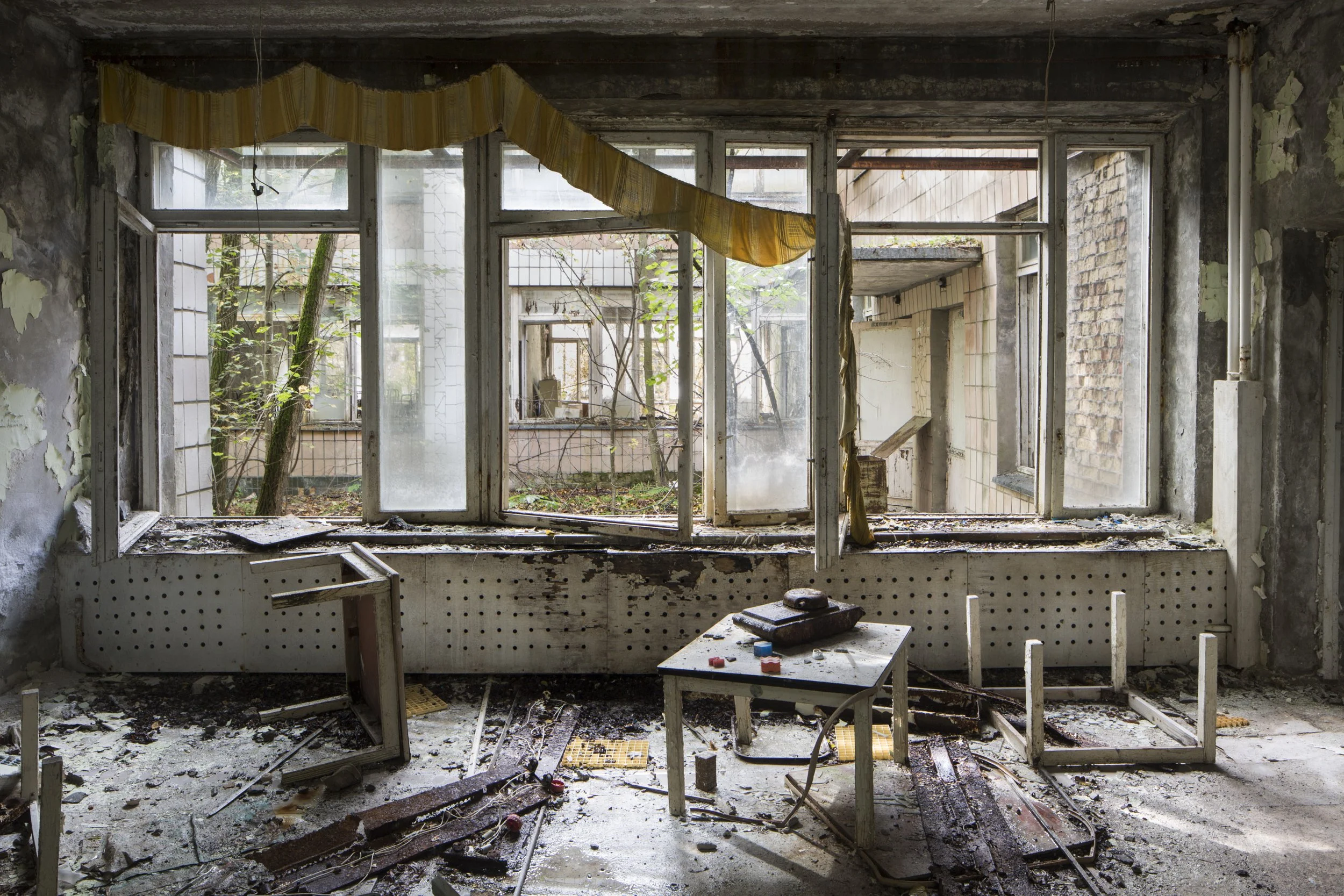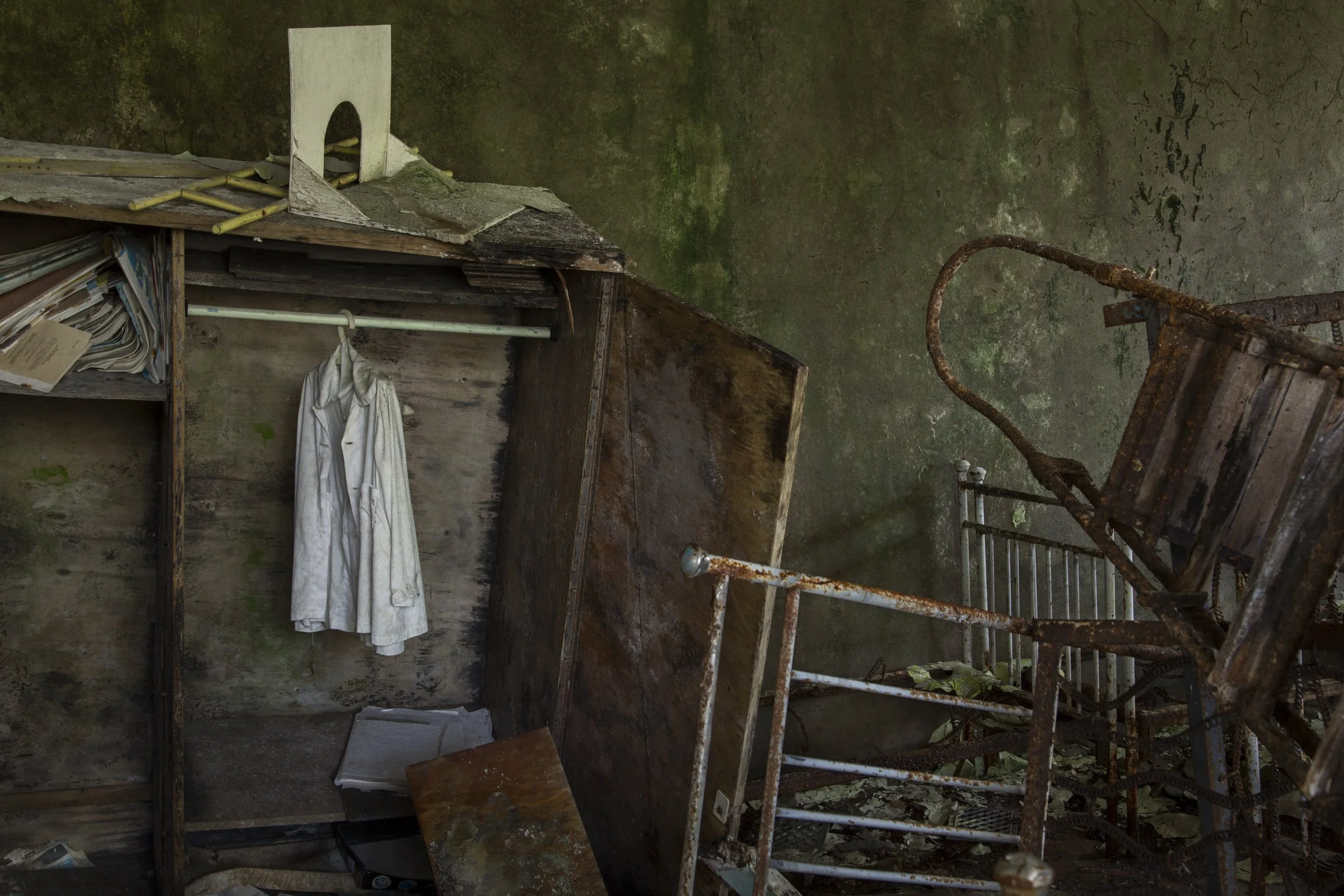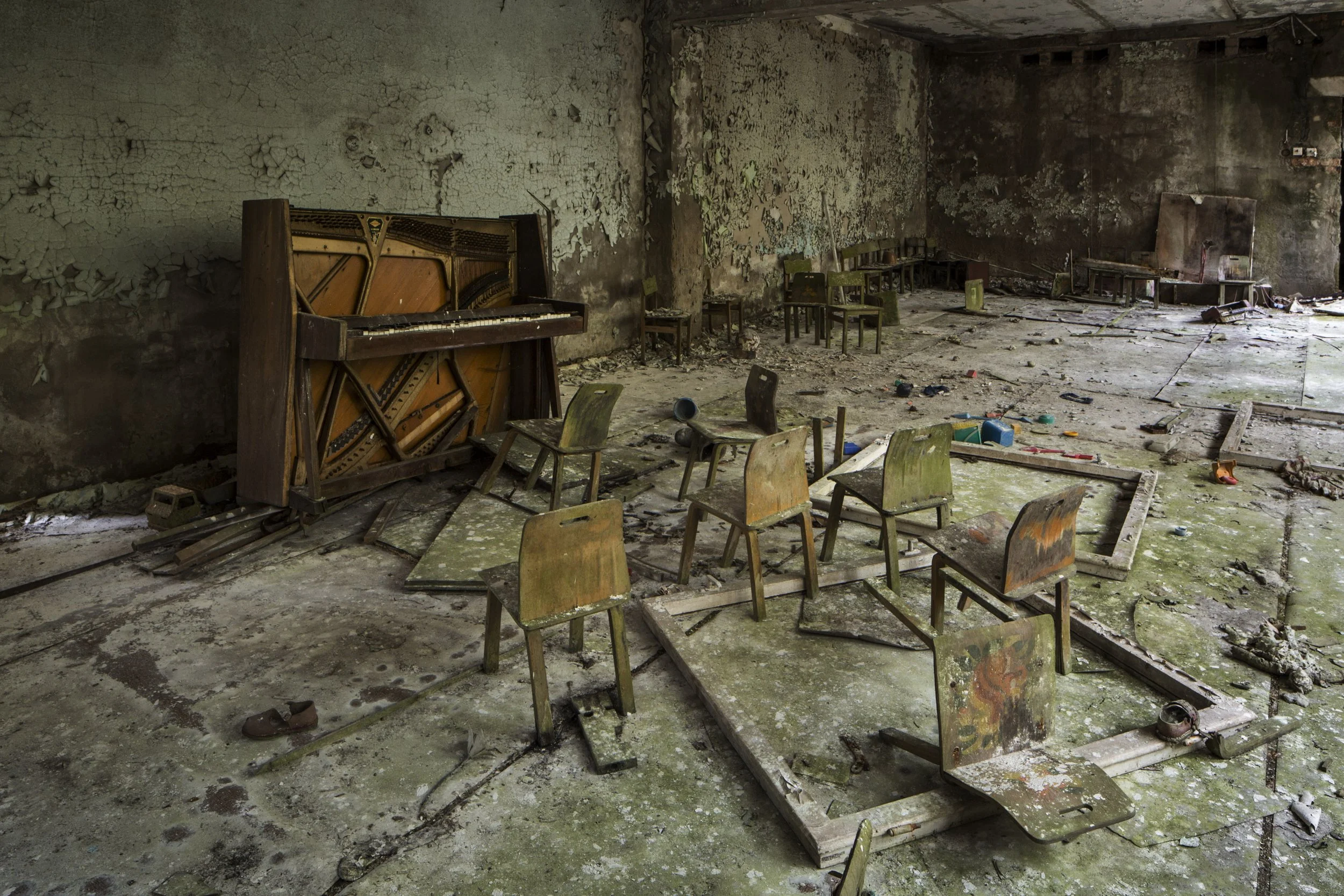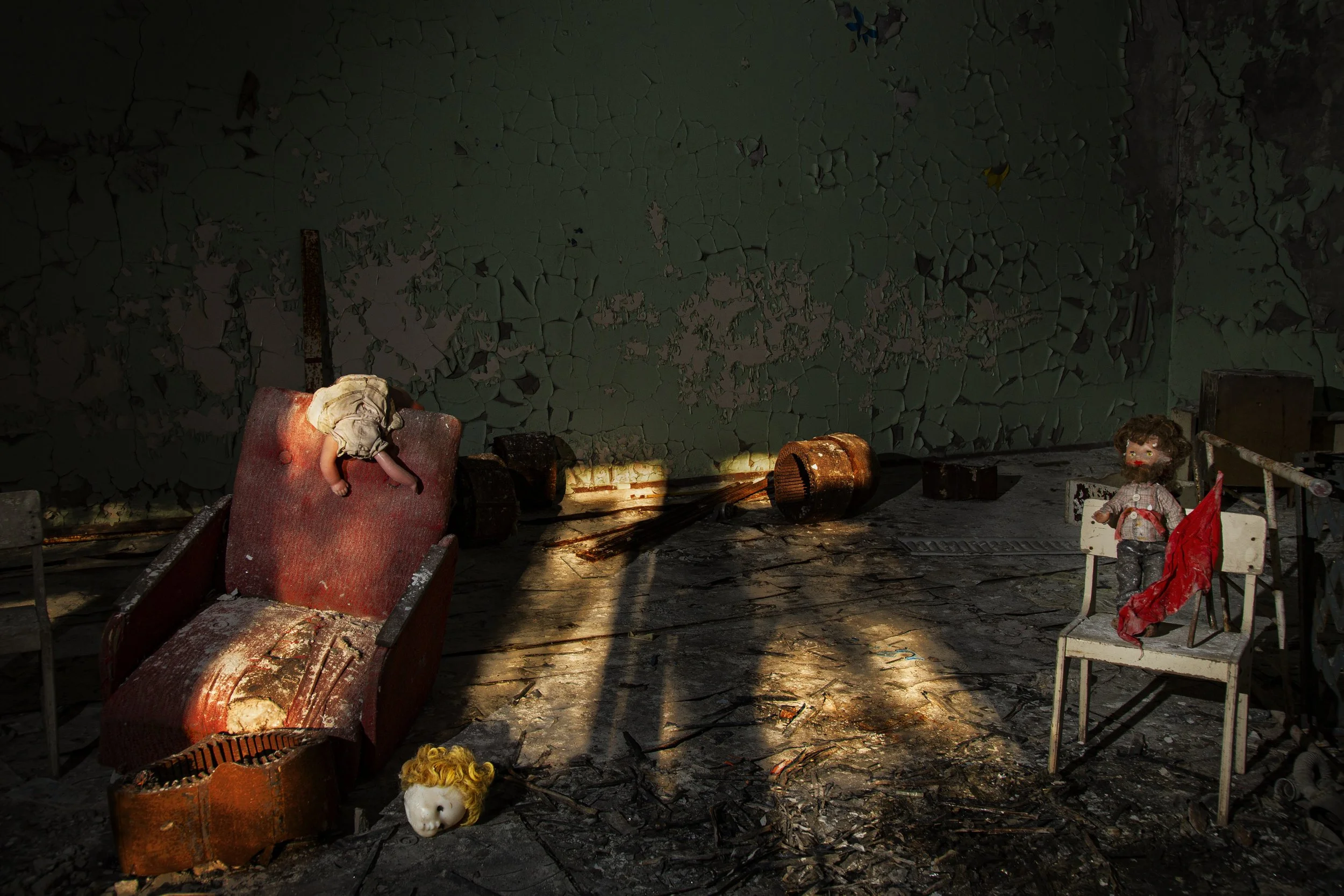In 2011, as people around the world watched TV reports about the widening nuclear meltdown in Fukushima, the Ukrainian government legalized trips to the Chernobyl exclusion zone. Chernobyl has since become a disaster-tourism destination.
The most riveting attraction for visitors is the ghost town of Pripyat. Formerly home to almost 50,000 people, Pripyat is now in decay: dolls are scattered in abandoned kindergartens, floors are rotting, paint is peeling from the walls, and gas masks litter evacuated schools.
While the accident itself created chaos of apocalyptic magnitude, three decades later, tourists and guides are creating another bewildering disturbance even as they – in a naive way – may seek to articulate a deeper comprehension.
Pripyat today bears less than honest witness to its abrupt abandonment as visitors have altered its landscape: first the scavengers, who stripped the rooms of valuables; later illegal intruders like taggers, and finally the tourists with their guides who assembled tableaux to illustrate the flight from disaster. Books are opened to pages depicting Marx or Lenin. A child’s chair sits in front of a piano, though from its height no child could reach the keys. And the most repeated motif: a lonely doll neatly arranged next to a gas mask.
The ever-falling chips of chalk from the ceilings have blanketed some of these “still-lifes,” furthering the illusion for the next visitor that this is how the evacuees hastily abandoned the scene. With limited time in the zone, the visitors often add to or alter existing arrangements, making compositions designed to be photographed close-up - and they are, by countless cameras and phones.
By stepping back to a larger frame, I am aiming to achieve a deeper understanding. My photographs with this wider perspective reveal these artful misrepresentations, designed by and for visitors to personalize tragedy in order to grasp its magnitude, just as symbols stand in for thought. While we instinctively consider such tinkering disrespectful, we can also see the arrangements as a naïve attempt to tell the horror of an age-old story; the cautionary tale that man should not build what he can’t control.
These photographs of post-apocalyptic tableaux provoke a mix of feelings: surprise, disgust, anger, and sadness, perhaps followed by the understanding that they were made out of the human impulse to create order and comprehension out of unforeseeable and incomprehensible chaos.
















